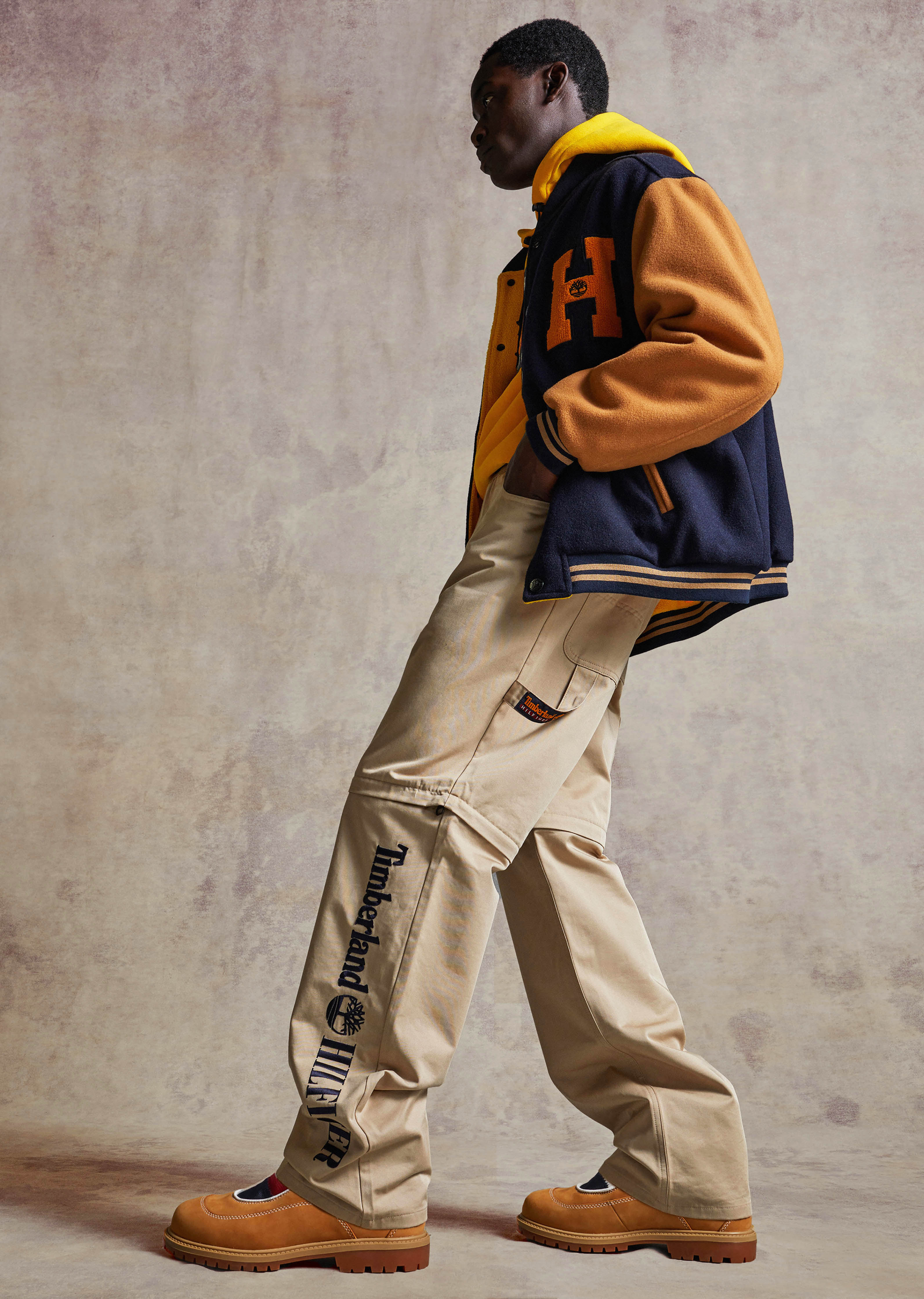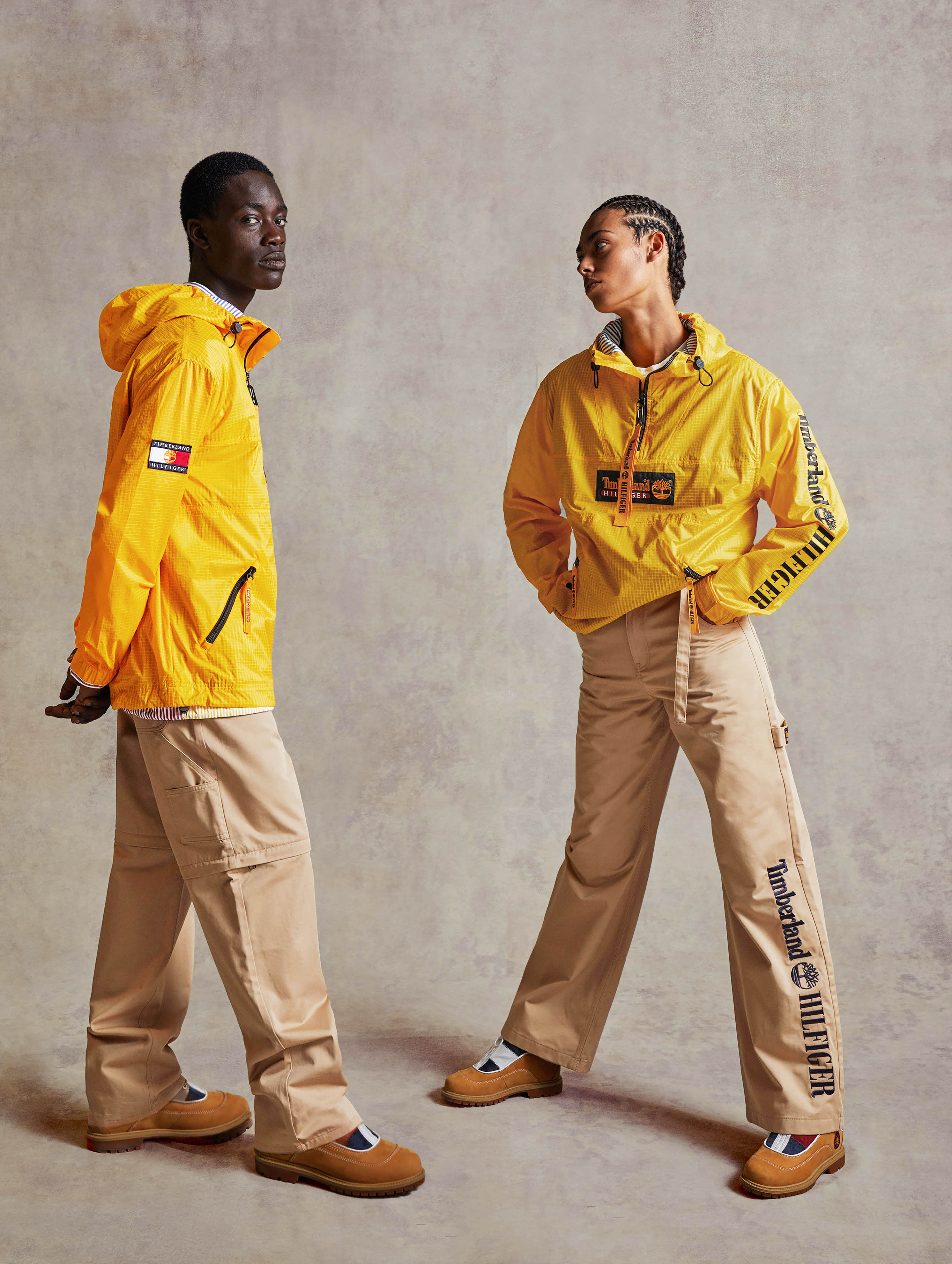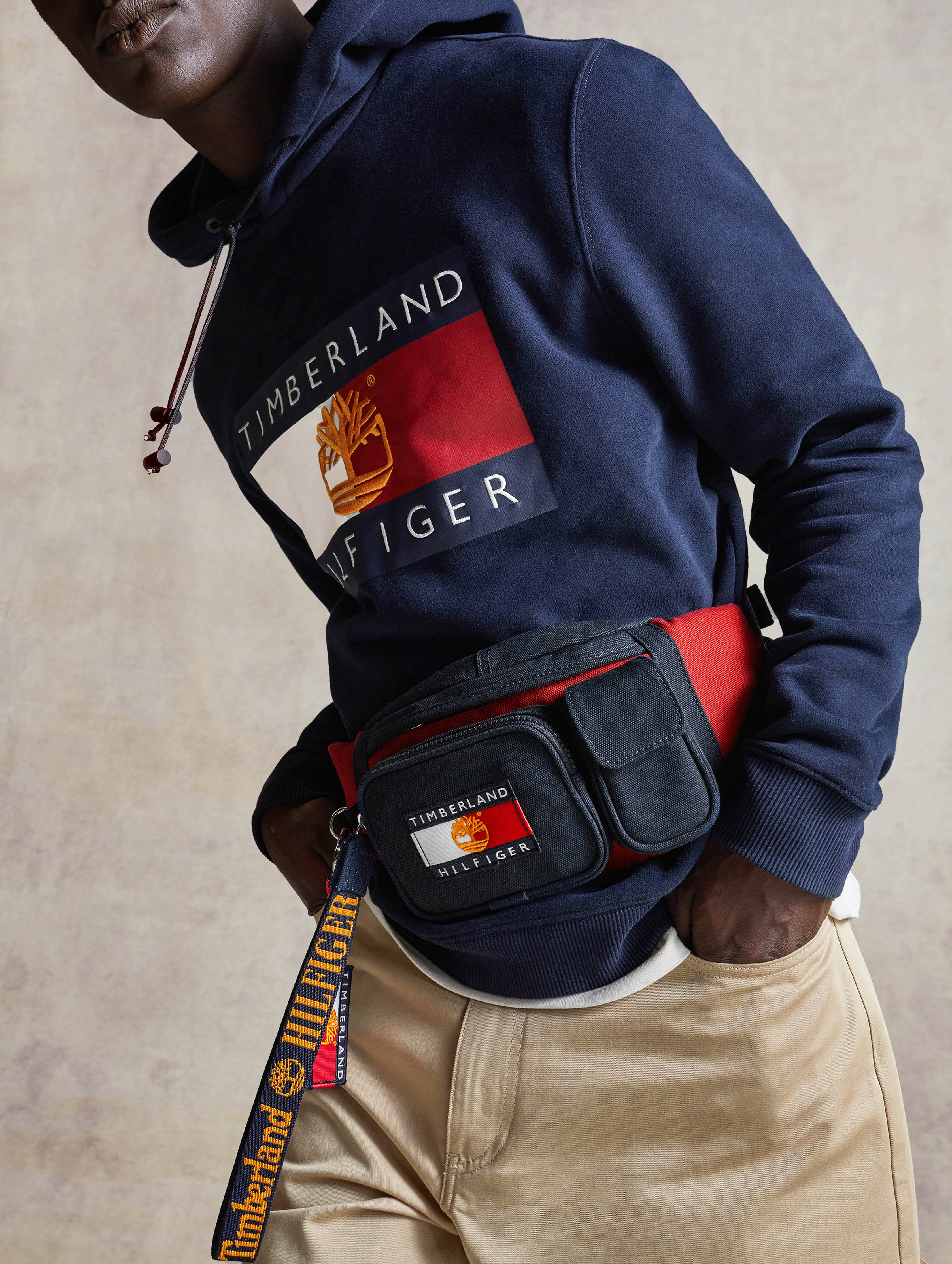Everything
Part deux of our ‘90s power collaboration Tommy Hilfiger and Timberland, TOMMYXTIMBERLAND, has landed. Made up of 48 curated pieces that balance the ideas and identities of both brands, the highly anticipated follow up to drop one takes a deep dive into the importance of sustainability within the fashion industry.
With drop one, Hilfiger and Timberland’s global creative director Christopher Raeburn started with their shared heritage and cultural impact – from music to street style – drop two is forward looking.
What is the future of fashion as we begin to think about the impact it has on the world, both environmentally and politically?
To get behind the creative process, ICON spoke to the men behind the magic to learn how collaborations of this sort can be a reeducation process for the fashion world.

ICON: The timing of Drop 2 with its sustainability focus and message feels particularly poignant after the recent meeting of world leaders in Glasgow. How important do you think fashion’s role will be in the future when it comes to tackling issues of waste and pollution?
Tommy Hilfiger: Fashion is a big contributor to climate change and the industry certainly has an important and necessary role to play in tackling it. The TommyXTimberland collaboration is all about finding solutions that reduce the ecological footprint of the fashion industry and that could change the world of fashion for the better. Our brands are both passionately dedicated to sustainability and eco-innovation and the collection is about looking forward and shaping the future we want to see for the next generation. This feeds into our wider sustainability vision at Tommy Hilfiger to become a brand that Wastes Nothing and Welcomes All, which is underpinned by 24 ambitious targets focussed on circularity and inclusion.
Christopher Raeburn: The fashion industry has an incredibly important role to play in reducing waste, conserving resources and creating a healthier planet. By increasing and scaling sustainable business practices and product offerings, brands can take real steps to minimize the environmental impacts of their products and work toward a greener future.
At Timberland, we’re setting our sights beyond sustainability. We have a vision for our products to have a net positive impact on the planet by 2030, giving back more than they take out and actually helping to restore our planet. We’re pursuing this vision through two bold goals – designing 100% of our products for circularity, and sourcing 100% of our natural materials through regenerative agriculture.

Timberland and Tommy Hilfiger have such strong brand DNA – how did you negotiate the combining of the two in a way that still retained the unique identity of both?
CR: Bringing together the best of these two iconic brands was quite frictionless, to be honest. Both were mainstays of ‘90s pop culture, which served as inspiration for Drop One. In the boot we designed, I love how the red, white and blue really pops against the wheat. For Drop Two, we drew inspiration from both brands’ commitment to responsible design and eco-innovation. Bringing together Timberland’s outdoor and work-inspired aesthetic with Tommy’s classic American style produced a unique collection that celebrates the shared heritage of both brands and takes us into the future.
The use of sustainable materials, closed loop production and zero waste is commendable, but is the fashion industry at large in a position to really revolutionise the system in a way that will make a lasting impact on the environment?
TH: I strongly believe that we can build a more sustainable future and make a lasting impact. But we can only achieve real change and address the most pressing global sustainability challenges by coming together as an industry. No single brand can do it on its own. Finding innovative solutions that will preserve our world’s resources requires continuous dialogue and education on an industry-wide level. As industry leaders in this field, through sharing our achievements and vision, we call on everyone – big and small – to exchange ideas and work together. Also, today’s socially conscious consumers want to connect with brands that align and embody their values in terms of social and environmental sustainability. Simply put, companies that don’t meaningfully engage and embrace change will be left behind.
CB: Every revolution starts with one step. More and more brands are making commitments to sustainability, and reflecting those commitments in the materials they use, their manufacturing and supply chain practices, and the products they offer.
As a real-world example of how the industry can create a lasting environmental impact: In 2005, Timberland was a founding member of the cross-industry Leather Working Group to address the impacts associated with leather tanning. We set a goal to source 100 percent of our leather from tanneries rated silver or gold by the LWG; since 2012, we have sourced over 90 percent of our leathers from gold/silver rated tanneries. Setting this goal not only led us to revolutionize our own supply chain, but it helped to revolutionize the tanning industry as a whole. The LWG started with just a handful of companies; today, we are more than100 strong.

Tommy Pier, the first capsule collection with Gigi Hadid saw a 900% website traffic increase 48 hours post show. How do you think this Tommy X Timberland collab will be received compared to the capsule collections that are shown in front of a sea of iPhones?
TH: This TommyXTimberland collaboration brings together our two iconic brands, both of which are deeply rooted in the history of 90’s pop culture; the collection captures that heritage but re-imagined it for today with eco-innovations. It really resonates with the mood of today and was highly anticipated – pieces from Drop 1 sold out within 24 hours, for example the menswear black hoodie and the womenswear yellow sweater dress. Consumers are tech savvy and happy to engage in a digital space, plus it means we can reach more fans than ever. Ultimately, it’s about designing collections and collaborating with people and brands that really resonate with the consumer.
You were one of the first to disrupt Fashion Week’s traditional top-down approach with your influencer-lined, see-now-buy-now runways. Will we see the TOMMY NOW travelling juggernaut return this year? And which ‘it’ girl is on your list to collaborate with next?
TH: We closed the chapter of the TOMMYNOW, “See Now, Buy Now” format with our Spring Summer 2020 show in London. It was a great initiative that really pushed boundaries and I’m proud of what we achieved, but it was time for something new. Our brand is built on a consumer-centric philosophy, and we are constantly working to meet their changing desires by bringing fresh, creative, accessible and engaging events to our fans globally that will immerse them in our brand world. I can’t tell you what that will look like yet but I can promise it will be great!
In terms of collaborations, I always love to partner with people who share our drive and values of inclusivity and determined optimism. These partnerships keep our brand exciting, injecting a fresh twist into our collections and campaigns and help us translate our positive stories and allow us to connect with local audiences and cultures around the world. All I can say for now is watch this space!
What are some of your favourite pieces from the collaboration?
TH: The Puffer Jacket. It’s filled with a mix of surplus fabrics and EcoLoft™, which you can see through the transparent material. It’s a great example of taking an iconic style and giving it a modern twist. I also love the komatsu parka. The vivid color comes from plant-based dye which is made from food industry waste rice husks.
CB: From the second drop, the Black Progressive Hiker boot. It’s got bold alpine styling with subtle contrasts from the Tommy color palette. Best of all, it’s made using Regenerative Leather, sourced from farms whose practices actually help restore the environment.